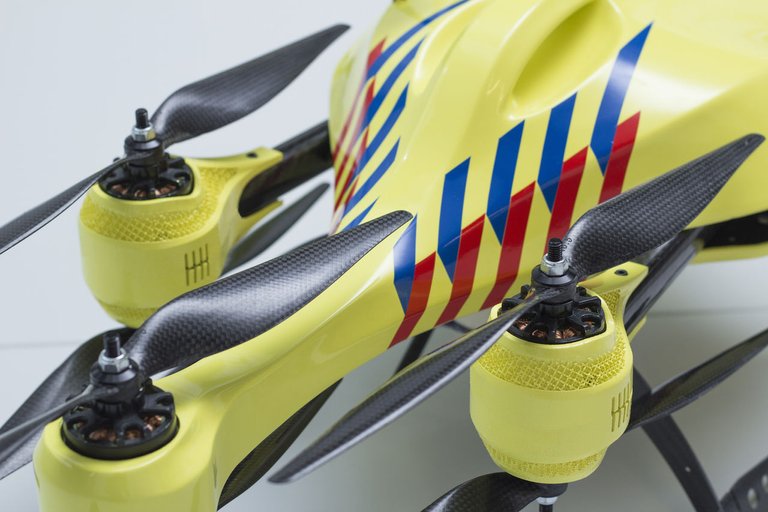An ambulance drone prototype was presented in October 2014 by the University of Delft (in the Netherlands), this was the result of the hard work of a Belgian student, Alec Momont, who wanted to increase the chances of survival of a heart attack and created this prototype for his master's degree project. Most lifesaving technologies such as an Automated External Defibrillator (AED), medication, Cardiopulmonary Resuscitation (CPR) aids can be designed compact enough to be carried by a drone.
Among the 800.000 people that suffer a heart attack in the EU every year, the survival rate is around 8%, the main factor preventing this number to go higher is the time taken by an ambulance to reach the victim.
The ambulance drone can be seen as another life-saving tool to be added to all the defibrillators we see in public spaces. The drones can travel at around 100km/h and could reach the victim in one minute in a zone of 12km². In the future, the drone could also be equipped with other first aid tools and be dispatched according to the situation (think of insulin, oxygen, etc.).

Some factors are still to be taken into account as the fact that successful AED usage by lay-persons is currently at 20%, with personalised instructions and communication on the Ambulance Drone (with microphone and camera), this could be increased to 90%.
The complex nature a such innovation and the legal implications of having flying objects in a city still prevent an easy exploitation for now. Let's hope that with the fast pace of technology nowadays, we will soon see these drones flying around to save lives. Other projects have been developed before, like the Defikopter, that drops a defibrillator and more recently the FlyPulse, a Swedish initiative that offers drone for multiple purposes.
Sources:
- https://www.tudelft.nl/en/ide/research/research-labs/applied-labs/ambulance-drone/
- http://www.futura-sciences.com/tech/actualites/robotique-drones-defibrillateurs-arrivent-4-fois-plus-vite-ambulances-55848/
- http://www.alecmomont.com/projects/dronesforgood/
- http://www.dailymail.co.uk/sciencetech/article-2811851/The-ambulance-drone-save-life-Flying-defibrillator-reach-speeds-60mph.html
- https://www.forbes.com/sites/larryhusten/2014/10/29/grad-student-invents-flying-ambulance-drone-to-deliver-emergency-shocks/#652b208f1bfc
- http://www.numerama.com/tech/267138-le-drone-equipe-dun-defibrillateur-le-futur-de-lintervention-durgence-rapide.html
- http://www.flypulse.se/
- https://www.theverge.com/2013/8/24/4654514/definetz-height-tech-defibrillator-carrying-drone-in-germany